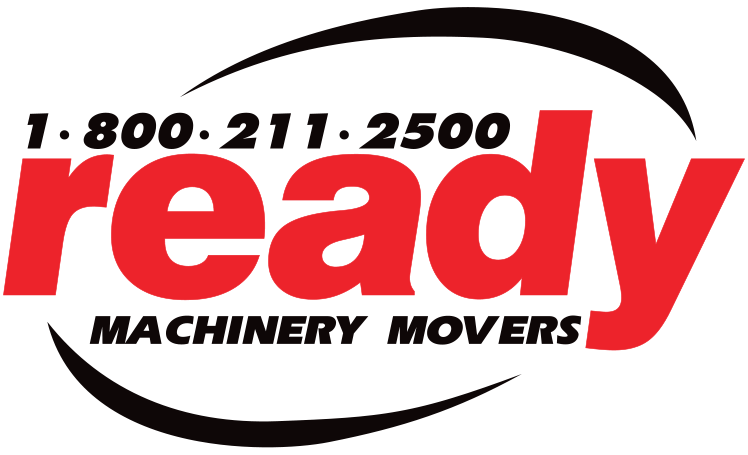Workplace safety is the responsibility of everyone — from the business owner down to the rank-and-file employees. Heavy equipment accidents can result in severe injuries and fatalities. According to a 2016 report, struck-by accidents make up for 13% of all workplace fatalities in Ontario in the last decade. A significant portion of that is the result of getting struck by or caught in a moving vehicle. Electrocutions are also a major cause of fatalities, with 20% of resulting critical injuries ending in death.
To keep you and your workers safe and protect your company from revenue loss due to claims and decreased productivity, you need to implement various protocols.
Pre-Operation Safety Procedures
Safety should not only be a priority while work is in progress. It should not be a knee-jerk reaction to hazards that present themselves. Ensuring safe operations requires constant vigilance, which means a significant amount of planning, preparation, and maintenance.
- Fully Train Your Operators
Each equipment has its own set of controls and risks. Make sure the operator is trained to use the specific machine he is assigned. To avoid misuse of equipment, do not allow uncertified or untrained workers to man vehicles or equipment. Training must be done if you have a new hire or acquired a new piece of equipment. Seasoned workers also need refresher sessions to keep them on their toes.
- Inspect Your Machinery
Conduct inspections at least once every day prior to use. Prepare a checklist of items to determine if your machines and equipment are in good working order. Doing so will allow you to spot and deal with issues before they become major hazards. Inspect individual components, including hydraulic connections, undercarriage, filters (air, oil, and fuel), and controls. To minimize slip and fall accidents, check handrails and steps for debris or grease. Increase safety with industrial machine guarding or drill press safety guard.
It would also help to establish communication channels between operators and mechanics to expedite maintenance and repairs when necessary.
- Be Aware Of Ground Workers
While operators need to focus on using equipment safely, ground workers working around equipment must know how to perform their tasks without obstructing the operator or getting into harm’s way. Establish safety precautions for ground workers. Restrict access to the equipment (if possible) by putting a barrier, like a safety fencing that passes machine guarding standards. Determine the swing radius of the equipment and have ground workers stay outside that area.
- Identify And Manage Potential Hazards
Operators should follow the following checklist when dealing with potential floor hazards:
- Identify obstructions. Locate overhead hazards (e.g. power lines and low clearance) and underground hazards (e.g. gas, water, and electrical).
- Flag or prevent access to hazards. To keep your employees from hitting flag these by putting up warning signs and/or marking areas with a coloured marker. Set up barriers or safety management equipment to keep workers and passersby from falling into holes or trenches.
- Manage fixtures and surfaces. Various environmental factors can influence the safety of the floor. Low lighting, for example, can decrease visibility, which raises the chances of struck-by and fall accidents. This should be addressed by adding more lighting fixtures or increasing surface reflectivity. Other hazards include potholes, bumps, cracks, and uneven floor surfaces which should be repaired immediately.
- Clean the floor so that passersby don’t trip and vehicles don’t bump into them.
- Place warning signs and decals reminding employees of safe practices.

During Operations
During your workday, there are things that you can do to make the workplace safer for yourself and your co-workers.
- Wear Protective Gear
Personal protective equipment (PPE) is designed to protect you from a variety of hazards. Even if an employee is not directly operating a machine, they still face dangers like getting hit by a vehicle or flying object. In areas with low visibility, visibility vests can help pedestrians avoid getting struck by a vehicle. Non-slip boots can help them trek through muddy areas or climb up vehicles with a decreased risk of slipping and falling.
- Wear A Seatbelt At All Times
Seatbelts have been known to save the lives of car drivers and passengers. They work equally well for drivers of heavy machinery. When a vehicle starts to turn over, a driver’s first instinct may be to evacuate the machine. However, this is more dangerous since the vehicle has the potential to tip back the other way and hurt the driver. Wearing a seatbelt is safer.
- Install A Rollover Protection System
One of the many dangers of heavy machinery is its potential to roll over or be overturned. Reducing these incidents can be done with a Roll Over Protection System (ROPS).
- Communicate Clearly
All workers must use the set procedures for communication to avoid any accidents. Blind spots make it dangerous for drivers of heavy vehicles to move around an area. Operators can seek the assistance of spotters so that they can maneuver safely across the floor and avoid such hazards as trenches, bumps, objects (whether moving or stationary), and even pedestrians. Hand signals are an effective way for spotters to communicate with operators. Passersby or those working around equipment should make eye contact with the driver before they approach the area.
- Mount Or Dismount Vehicles Carefully
Assuming that the handrails and steps are sturdy, well-maintained, and free of grease, accidents can still happen if you mount or dismount a vehicle haphazardly. To effectively steer clear of fall accidents when stepping on or off a vehicle, instruct your employees to strictly adhere to safe practices.
Individuals have four points of contact — both feet and both hands. If maintaining this is not possible, employees should use at least three points of contact — one hand and two feet or two hands and one foot — when exiting or entering a vehicle. In addition, employees should:
• Always use the designated steps and handholds of a vehicle
• Never use door frames, levers, or stirring wheels as handholds
• Never use wheels as a step surface
• Never jump out of a vehicle
• Always face the vehicle when climbing up or down
• Always keep your hands (and feet) clean of dirt and oil
- Load Or Unload Equipment Properly
Heavy equipment may have the ability to carry large loads, but they still have limits which vary from one machine to the other. Ascertain the load capacity of each equipment to avoid overloading it. Loads should also be secured properly to keep them from falling off the rigging. In addition, loading and unloading should be done on level ground to avoid hazards like rollovers. Operators should also make sure that the area is clear of people to keep from injuring anyone if the process goes amiss.
- Do Not Let Workers Overexert Themselves
Regardless of whether the employee is a newbie or a seasoned worker, they should not overwork themselves. Besides the dangers of musculoskeletal disorders and repetitive strain injuries, overexertion can cause fatigue, stress, and decreased alertness. These, in turn, can lead employees to make mistakes and bad decisions.
Post-Operation Procedures
After the task is completed, or the workday is over, there are still some steps to take before going home for the day to maximize workplace safety.
- Shut Down Equipment Properly
Disconnect the power to the equipment to prevent incidents related to electrocution. For vehicles, operators should set the brakes, switch engines off, remove or lower attachments, and put the transmission in neutral.
- Implement Lock-out Or Tag-out Procedures
Lock-out or tag-out procedures work by safeguarding your machine so that it does not unexpectedly start or discharge energy. They protect employees from getting injured when performing maintenance or repairs on a machine.
- Store Equipment Properly
Clean the equipment or machine to keep them from rusting or breaking down when not in use, especially if storage is expected to be long-term. Set up barriers, like a machine guard or fencing, to prevent damaging equipment from impact or misuse. When storing equipment, be sure it’s done away from traffic. Storing it off-site can work just as well. Just be sure to find a reliable partner that specializes in heavy equipment storage.
While safety should be a priority in all workplaces, it is of even greater import in locations that operate with heavy equipment. Don’t take the chance and risk the health and wellbeing of your workers. Follow the necessary machine safety standards to protect your investment and prevent the loss of income.
For assistance with relocating or storing heavy equipment, call Ready Machinery Movers at 1-800-211-2500.
